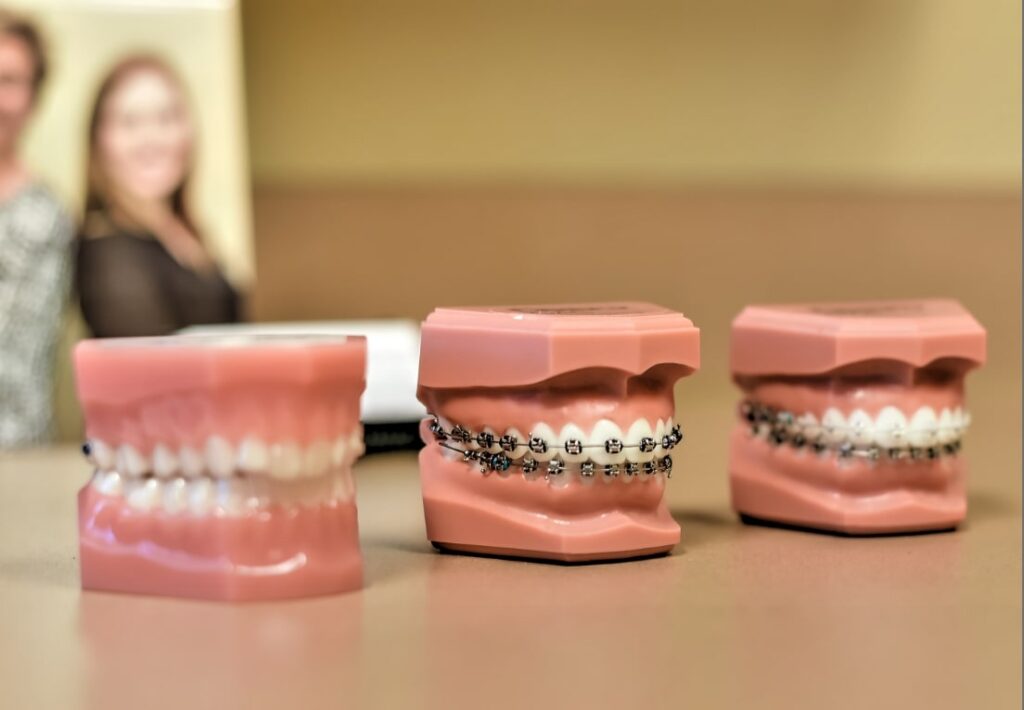Your Guide to Cumming Invisalign: Straightening Teeth with Style and Convenience
Wiki Article
Comprehensive Guide to Orthodontics Treatments for Remedying Dental Misalignments
In the realm of orthodontics, the journey to accomplishing a flawlessly aligned smile involves a myriad of procedures customized to fix dental misalignments. From standard dental braces to unseen aligners and also surgical options, the field of orthodontics provides a variety of remedies to resolve differing degrees of oral abnormalities. Comprehending the complexities of each treatment, including their devices, advantages, and prospective drawbacks, is critical in making informed choices about one's orthodontic treatment. As we navigate through the detailed guide to orthodontic treatments for fixing oral misalignments, the intricate details of each approach will unravel, losing light on the path towards a functional and unified dental placement.Orthodontic Procedures Overview

Along with traditional braces and clear aligners, orthodontists may additionally suggest various other treatments like headwear, palatal expanders, or retainers to address details positioning concerns (orthodontics). These procedures are customized to each person's special needs and may include a mix of treatments to accomplish the preferred outcomes. Normal modifications and surveillance are important components of orthodontic treatment to guarantee progression gets on track and to make any kind of required adjustments in the process. By undertaking orthodontic treatments, people can not only achieve a straighter grin yet additionally enhance their total oral health and function.
Traditional Braces: How They Function
When taking into consideration orthodontic treatments for oral misalignments, standard dental braces stand out as a reliable method for correcting teeth positioning. Standard braces consist of braces, cords, and bands that work together to apply continuous pressure on the teeth, gradually moving them right into the preferred positioning.
As pressure is used to the teeth via the dental braces, the bone bordering the teeth is reshaped to support the brand-new tooth positions. People will need regular modifications at the orthodontist's office to make certain the dental braces proceed to use the appropriate pressure for effective teeth movement.
Unseen Aligners: Pros and Cons
Undetectable aligners offer a convenient and discreet choice to traditional dental braces for fixing oral misalignments. These clear, personalized trays are basically unnoticeable when put on, making them an attractive alternative for individuals seeking a much more visually pleasing orthodontic therapy. One of the main benefits of invisible aligners is their removability, enabling simpler upkeep of dental health compared to typical dental braces. Patients can get rid of the aligners before consuming or brushing their teeth, reducing the threat of food getting stuck in the appliance and simplifying the cleansing process.
Surgical Orthodontic Options
Surgical interventions in orthodontics present sensible options for addressing complex oral imbalances that might not be efficiently resolved through conventional orthodontic treatments. While traditional dental braces and unseen aligners can correct lots of orthodontic problems, specific cases need medical treatment to accomplish optimal outcomes. Surgical orthodontic alternatives are typically advised for severe malocclusions, significant jaw discrepancies, and cases where the underlying bone structure requires adjustment to accomplish proper alignment.One common medical orthodontic treatment is orthognathic surgical procedure, which includes repositioning the jaws to deal with functional issues such as difficulty speaking or eating. This surgical treatment is typically executed in partnership with an orthodontist that assists line up the teeth before and after the procedure. Surgical orthodontics might additionally include treatments to subject affected teeth, eliminate cosmetic dental center excess gum tissue, find a dentist that takes my insurance or reshape the jawbone to produce a more unified face profile.
Before thinking about medical orthodontic options, clients undertake a detailed analysis to figure out the necessity and prospective benefits of such interventions. braces. While surgical procedure may appear difficult, it can significantly improve both the feature and visual appeals of the smile in instances where conventional orthodontic treatments fall short
Retainers and Post-Treatment Treatment

Post-treatment treatment includes complying with the orthodontist's instructions faithfully. This might include proper dental hygiene practices, attending follow-up consultations, and putting on the retainers as prescribed. Failing to adhere to post-treatment care instructions can result in relapse, where the teeth progressively return in the direction of their original placements. Consistent retainer wear, great dental health, and regular dental check-ups are important for keeping the outcomes accomplished via orthodontic surgical procedure and guaranteeing the lasting stability of the corrected dental positioning.
Conclusion
To conclude, orthodontic procedures use different alternatives for dealing with dental imbalances. Traditional dental braces make use Look At This of metal braces and wires to change teeth into correct alignment. Invisible aligners provide a more discreet alternative but may not appropriate for all instances. Surgical orthodontic options are available for extra severe imbalances. Retainers are commonly utilized post-treatment to preserve the new alignment. On the whole, orthodontic treatments can efficiently boost oral health and visual appearance.As we navigate via the extensive overview to orthodontic procedures for correcting oral misalignments, the elaborate details of each approach will certainly unravel, losing light on the path towards a harmonious and functional dental placement. - cumming braces
One of the most common orthodontic therapies is the usage of dental braces, which are composed of steel brackets and cords that use gentle stress to gradually move teeth into the desired position.When taking into consideration orthodontic therapies for dental misalignments, conventional dental braces stand out as a time-tested method for dealing with teeth positioning. Additionally, invisible aligners may not be ideal for intricate orthodontic issues that require more substantial teeth motion, as they are generally recommended for mild to moderate situations. Retainers are personalized orthodontic gadgets designed to hold teeth in their dealt with placements after the completion of orthodontic treatment.
Report this wiki page